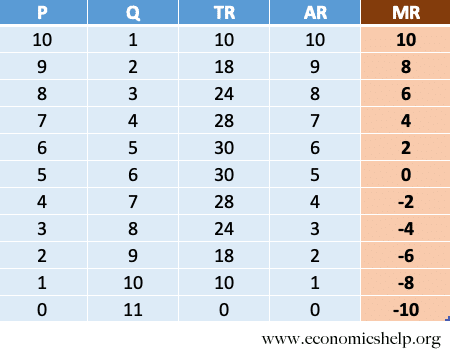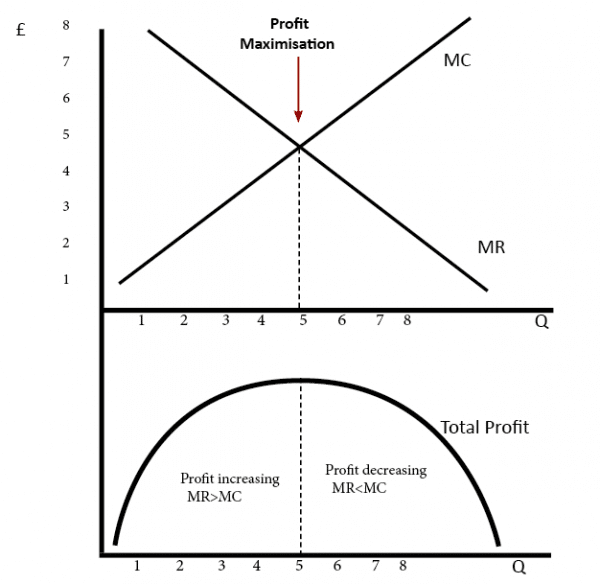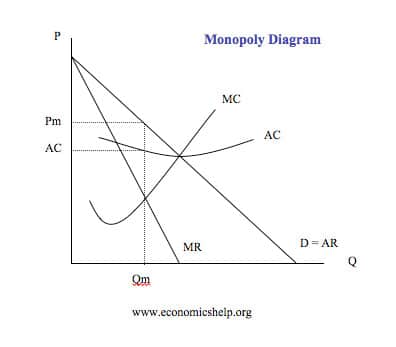Definition: Marginal revenue (MR) is the additional revenue gained from selling one extra unit in a period of time.
- Marginal revenue (MR) = Δ TR/Δ Q
- If a firm sells an extra 50 units and sees an increase in revenue of £200. Then the marginal revenue of each extra unit sold is £4
Example of Marginal Revenue
This shows the price (P), quantity (Q), total revenue (TR) average revenue (AR) and marginal revenue (MR)
If the firm cuts the price from £7 to £6, quantity increases to 5. Total revenue increases by two. Therefore the marginal revenue is two.
If the firm cuts price from £3 to £2, total revenue falls by six. Therefore, the marginal revenue is -6.
Marginal revenue and revenue maximisation
If a firm wished to maximise revenue, it can use marginal revenue to guide its decision. If marginal revenue is positive, the total revenue is increasing.
If marginal revenue is negative, total revenue is decreasing.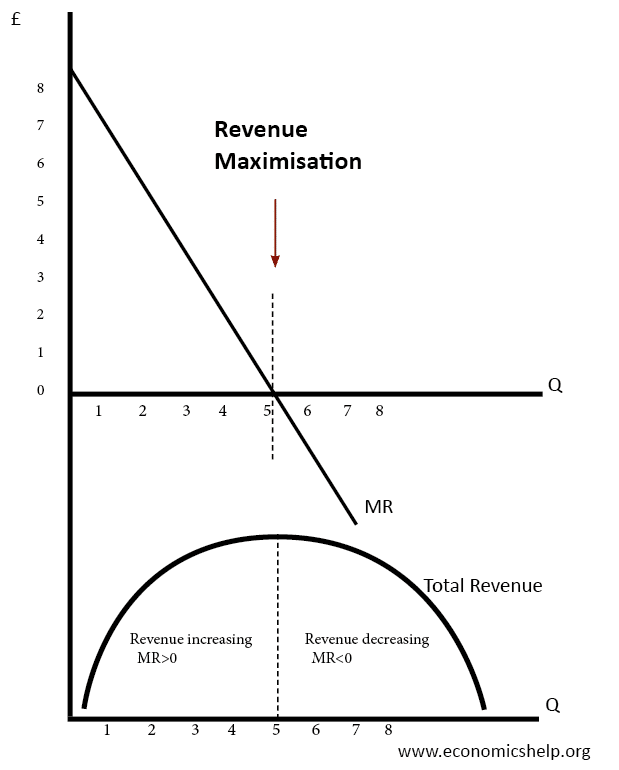
In this example, revenue is maximised at a quantity of 5.
Marginal revenue and profit maximisation
- To maximise profits, a firm needs to consider both marginal revenue and marginal cost.
- If marginal revenue is greater than marginal cost, then total profits will be increasing.
- Profit will be maximised at the point where MR=MC
Example
In the real world, an airline may sell some last-minute tickets for a very low price. The marginal revenue may be quite low. However, the marginal cost of selling empty seats on a plane is also quite low.
Marginal revenue and Marginal revenue product
A firm’s demand curve for labour depends on the marginal revenue of the last good sold and the marginal physical product of an extra worker.
MRP = MPP x MR.
Relationship between average revenue and marginal revenue.
If the firm is a price taker, its demand curve will be perfectly elastic. In this case, the marginal revenue will be the same as the price and average revenue.
If the price is £5, then the addition to revenue (MR) for selling an extra good, will always be equal to the price £5
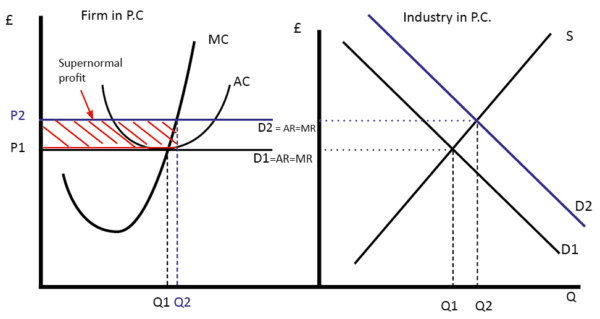
Marginal revenue in monopoly
When a firm faces a downward-sloping demand curve, then marginal revenue will be less than average revenue and can even be negative.
This is because, if a firm cuts price, it gets a lower average price but also loses revenue it could otherwise have made from selling units at a higher price.
Marginal revenue and elasticity

- However, if a firm cuts price and marginal revenue is negative (total revenue falls). This implies that demand is price inelastic. (% change in demand less than % change in price)
- At quantity of 6, where MR = 0, at this point, PED = 1 (unitary elasticity)
- This shows the elasticity of demand for a straight line demand curve varies.
Related
Published 12 May 2020, Tejvan Pettinger. www.economicshelp.org

